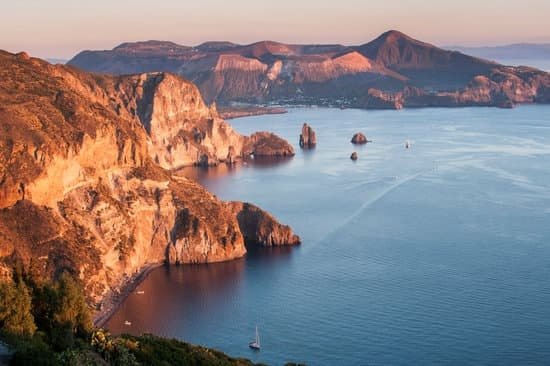When is the best time to travel Italy? Planning a trip to this iconic destination requires careful consideration of various factors, from the weather and budget to personal preferences and cultural events.
In this article, we will delve into the ideal timing for your Italian adventure, offering insights on when to experience bustling crowds and quieter moments, navigate Italy’s climate and seasons, immerse yourself in cultural celebrations, and more. Whether you are a first-time traveler or a seasoned Italophile, our guide will help you set the stage for an unforgettable journey through Italy.
Italy is a country renowned for its rich history, breathtaking landscapes, delectable cuisine, and vibrant culture. However, the best time to visit Italy greatly depends on your priorities and interests. Understanding Italy’s diverse climate and distinct seasons is crucial in planning a successful trip. In addition to weather considerations, peak and off-peak seasons can dramatically affect your experience of popular tourist destinations such as Rome, Florence, Venice, and the Amalfi Coast.
As we explore the various aspects of timing your Italian adventure, we will also provide valuable tips from locals on when to visit and how to make the most of your time in this captivating country. Whether you prefer immersing yourself in bustling city life or savoring quiet moments in charming villages, there is a perfect time for everyone to discover the magic of Italy.
Weather
Italy’s climate and seasons greatly influence the best time to visit this beautiful country. Understanding the weather patterns can ensure that you have an enjoyable and comfortable experience during your travels. Italy experiences a Mediterranean climate, with hot, dry summers and mild, wet winters.
Here are some key points to keep in mind when considering the weather in Italy:
- Summers (June to August) bring scorching temperatures, especially in southern regions like Sicily and Puglia. This is also peak tourist season, so expect crowded attractions and higher prices.
- Spring (April to June) and autumn (September to October) offer milder temperatures and fewer tourists, making it a great time to explore cities like Florence and Venice without the summer crowds.
- Winters (November to February) are the off-peak season, with cooler temperatures and a chance of rain. However, this can be a magical time to visit Italian ski resorts or enjoy the festive holiday atmosphere.
It’s important to consider your tolerance for heat or cold, as well as your preferences for tourist crowds when deciding when is the best time to travel Italy.
In addition to considering seasonal weather patterns, it’s also crucial to take into account regional variations in climate. Northern regions such as Milan and the Italian Lakes experience cooler temperatures than southern regions like Naples and Amalfi Coast. By understanding these nuances, travelers can make informed decisions about their ideal timing for an Italian adventure.
Peak Season
When is the best time to travel to Italy if you thrive in lively atmospheres and enjoy being around large crowds of tourists? For those who love the hustle and bustle, the peak season in Italy typically occurs during the summer months, from June to August. During this time, you can expect warm weather, longer days, and an abundance of outdoor activities and events.
Here are some highlights of visiting Italy during peak season:
- Vibrant street festivals and outdoor concerts
- Open-air markets bustling with activity
- Longer hours for popular attractions such as museums and historical sites
While it may be crowded, there is a certain energy and excitement that comes with experiencing Italy at its busiest. Keep in mind that popular tourist destinations like Rome, Venice, and Florence may be packed with visitors during this time, so be prepared for longer lines at major attractions.
If you plan to visit coastal areas like the Amalfi Coast or the Italian Riviera during peak season, make sure to book accommodations well in advance as beachside resorts tend to fill up quickly. Additionally, keep in mind that prices for hotels and flights can be higher during this time compared to other seasons.
Off-Peak Season
Choosing to travel to Italy during the off-peak season can provide a more authentic and peaceful experience compared to the hustle and bustle of peak tourist times. Generally, the off-peak season in Italy falls between the months of November and March.
During this time, you can expect fewer crowds at popular tourist attractions, shorter lines, and discounted hotel rates. Additionally, you will have the opportunity to interact with locals on a more personal level, as they are not overwhelmed by tourists.
One of the major advantages of visiting Italy during the off-peak season is the opportunity to enjoy its rich cultural heritage without feeling rushed or crowded. You can leisurely explore renowned historical sites such as the Colosseum in Rome, the Duomo in Florence, and the ancient ruins in Pompeii without having to navigate through swarms of tourists.
Not only does this allow for a more immersive experience, but it also provides better photo opportunities without having other visitors in every picture.
Moreover, off-peak travel allows for a deeper connection with Italian culture and traditions. With fewer tourists around, you’ll have a chance to dine at local restaurants frequented by Italians themselves and participate in authentic cultural experiences like cooking classes or wine tastings.
Additionally, many cities host seasonal festivals and events such as Christmas markets and Carnivale celebrations during this time. Traveling during off-peak season gives you a chance to witness these events from a local’s perspective rather than being surrounded mostly by other tourists.
Events and Festivals
Italy is known for its vibrant and lively cultural celebrations, including a wide variety of events and festivals that take place throughout the year. From religious holidays to historical commemorations to food and wine festivals, there are numerous opportunities to immerse yourself in Italian culture during your visit. When planning your trip to Italy, understanding the timing of these events and festivals can greatly enhance your experience and provide you with deeper insight into the local traditions and customs.
Religious Holidays and Celebrations
One of the most significant aspects of Italy’s cultural calendar is its religious holidays and celebrations. If you are interested in experiencing traditional religious processions, elaborate ceremonies, and sacred rituals, then visiting Italy during Easter or Christmas may be ideal for you. These holidays are deeply rooted in Italian culture and provide a unique opportunity to witness centuries-old traditions still being practiced today.
Historical Commemorations
Italy has a rich history that is commemorated through various events and festivals held throughout the country. Whether it’s the ancient Roman festival of Saturnalia, the medieval jousting tournament in Siena, or the Renaissance fair in Florence, there are numerous historical reenactments and celebrations that offer a glimpse into Italy’s past. Attending these events can transport you back in time and allow you to experience Italy from a different perspective.
Food and Wine Festivals
For those who have a passion for Italian cuisine and wines, attending one of the many food and wine festivals held across Italy can be a highlight of their visit. From the truffle festival in Alba to the gelato festival in Florence to the grape harvest festivities in Tuscany, these events showcase some of Italy’s most beloved culinary delights.
If savoring delicious Italian dishes while sipping on local wines sounds appealing to you, then planning your trip around these festivals may be the best time to travel Italy for you.
Budget-Friendly Travel
When planning a trip to Italy, it’s important to consider the costs associated with visiting this popular destination. From accommodations to dining and transportation, understanding the budget-friendly options can help you make the most of your Italian adventure without breaking the bank.
Accommodations and Travel Deals
One of the major expenses when traveling to Italy is accommodation. However, there are ways to find budget-friendly options such as staying in hostels or bed and breakfasts. Additionally, keep an eye out for travel deals and promotions offered by hotels or vacation rental companies, especially during the off-peak season when prices tend to be lower.
Dining on a Budget
Italian cuisine is undoubtedly one of the major highlights of any trip to Italy. While dining out at renowned restaurants can be pricey, there are plenty of budget-friendly options available. Look for local trattorias or osterias that offer authentic dishes at more affordable prices. Also, consider shopping at local markets and preparing your own meals if you’re staying in accommodation with kitchen facilities.
Public Transportation and Sightseeing
When visiting Italy, getting around can also become a significant part of your expenses. However, utilizing public transportation such as trains and buses can be a cost-effective way to travel between cities and explore different regions. Many cities also offer sightseeing passes that provide access to multiple attractions at discounted rates, so be sure to research these options before embarking on your Italian adventure.
By navigating the costs associated with visiting Italy, you can enjoy a memorable experience while sticking to your budget. Keep in mind that off-peak seasons often offer more affordable rates for accommodations and attractions, making it favorable for budget-conscious travelers looking for cheaper alternatives – when is the best time to travel Italy
Local Insights
Italy is a country that boasts a rich and diverse culture, making it an attractive destination for travelers from all over the world. But when is the best time to travel Italy? For local insights on this matter, it’s best to turn to the Italians themselves, who have a deep understanding of their country’s rhythms and nuances.
One piece of advice from locals is to consider visiting Italy during the shoulder seasons, which fall in the spring (April to June) and fall (September to October). During these times, the weather is generally pleasant, with fewer crowds compared to the peak summer season. This allows travelers to explore popular attractions without feeling overwhelmed by hordes of tourists.
Another tip from Italians is to embrace the tradition of “Ferragosto,” which takes place on August 15th. This public holiday marks the peak of summer in Italy and sees many locals take vacations or participate in various festivities. While tourist hotspots may be crowded during this time, it provides an opportunity for visitors to witness and partake in authentic Italian celebrations.
Additionally, Italians often recommend considering regional events and festivals when planning a trip to Italy. Each region has its own unique calendar of cultural celebrations throughout the year, such as Siena’s Palio horse race or Venice’s Carnival. By aligning your visit with these events, you can immerse yourself in local traditions and experiences that are cherished by Italians.
| Best Time | Travel Advice |
|---|---|
| Shoulder Seasons | Visit during April-June or September-October for pleasant weather and fewer crowds |
| Ferragosto | Consider experiencing Ferragosto on August 15th for authentic Italian celebrations despite crowds |
| Regional Events | Align your visit with regional events and festivals for unique cultural experiences |
Personal Preferences
Italy is a country that offers something for everyone, whether you’re interested in exploring historical sites, enjoying delicious cuisine, or lounging on picturesque beaches. When considering the best time to visit Italy, it’s important to take your personal preferences into account.
If you prefer mild weather and smaller crowds, the shoulder seasons of spring (April to June) and fall (September to October) may be the ideal time for you to visit Italy. During these times, you can enjoy pleasant temperatures and avoid the peak tourist season. This means you can explore popular attractions without feeling overwhelmed by large crowds.
On the other hand, if you are someone who loves vibrant street festivals and lively outdoor events, then visiting during the summer months might be more suitable for you. Summertime in Italy is filled with colorful celebrations such as the Palio di Siena horse race and various music festivals. Keep in mind that this is also peak tourist season, so expect larger crowds and higher prices.
For those who are looking to experience Italy on a budget, traveling during the winter months (November to February) could be a great option. During this off-peak season, accommodations and airfare tend to be cheaper, making it an attractive choice for travelers on a budget.
Now that we’ve explored some options based on different personal preferences and priorities, it’s important to remember that there really isn’t a one-size-fits-all answer when it comes to choosing the best time to travel to Italy. The ideal time for your Italian adventure will ultimately depend on what experiences and activities matter most to you. So take some time to consider your preferences and plan your trip accordingly.
| Personal Preference | Ideal Time |
|---|---|
| Prefer mild weather and smaller crowds | Spring (April-June) or Fall (September-October) |
| Love vibrant street festivals and lively outdoor events | Summer months |
| Traveling on a budget | Winter months (November-February) |
Conclusion
In conclusion, determining the best time to travel to Italy ultimately depends on your personal preferences, budget, and what experiences you are seeking. Whether you are looking to embrace the bustling atmosphere of peak season or prefer a quieter and more authentic Italian experience during the off-peak season, there are a variety of factors to consider when planning your trip.
Understanding Italy’s climate and seasons can also play a significant role in choosing the best time to visit, as weather conditions can greatly impact your travel experience.
It’s essential to consider any major events and festivals happening in Italy that may align with your interests and provide an opportunity to immerse yourself in the country‘s rich cultural celebrations. Additionally, taking into account local insights and tips from Italians on the best time to visit can offer valuable guidance for planning your Italian adventure.
Ultimately, choosing the ideal time to travel Italy is a personal decision that should be based on your individual interests and priorities. Whether you prioritize budget-friendly travel, avoiding crowds, or participating in specific cultural events, understanding these various aspects of timing your trip will help ensure a memorable and satisfying Italian journey. With careful consideration and research, you can plan a trip that aligns with your preferences and provides an unforgettable experience in this beautiful Mediterranean country.
Frequently Asked Questions
What Is the Best Month to Go to Italy?
The best month to go to Italy is typically in the shoulder seasons of spring or fall. During April to June or September to October, you can enjoy pleasant weather, fewer crowds, and potentially lower prices for accommodations.
What Is the Cheapest Month to Go to Italy?
The cheapest month to go to Italy is usually in the winter, particularly during January and February. Many tourists avoid traveling during this time due to the colder temperatures and potential for rain. As a result, you may find better deals on flights and hotels.
What Is the Best Time Period of Italy?
The best time period to visit Italy depends on your preferences and priorities. If you want to experience the vibrant energy of cities like Rome and Florence, then spring or fall would be ideal. But if you prefer beach vacations along the Amalfi Coast or Sicily, then summer would be the best time despite the higher tourist numbers and temperatures.

I’m a passionate traveler, writer, and Italophile. My fascination with Italy’s history, art, and culture has led me on countless adventures across the Italian landscape. Through “I Live Italy,” I share my love for this extraordinary country and aims to inspire others to explore its boundless beauty.





